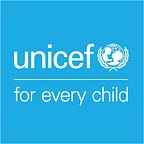28 June 2017
Pleased to introduce you to the pentavalent vaccine!
The story of how pentavalent became one of the most used vaccines in the world.
UNICEF, partner organizations, and manufacturers all play key parts in the journey to make the pentavalent vaccine available to the most vulnerable children. As its name suggests, pentavalent is a single vaccine that protects against five diseases — ideal because it cuts down on both cold storage space and routine immunization appointments for children. Thanks to innovations in the pentavalent vaccine over the past several years, it is now easier to administer than ever.
Manufacturing a vaccine like the pentavalent that contains five antigens — substances that stimulate the body to produce antibodies — is especially complex. The antigens protecting children against hepatitis B, pertussis, diphtheria, tetanus and Haemophilus influenzae type b (Hib) are produced separately and then combined. For a long time, the hurdle to producing pentavalent in large quantities lay in the difficulty in mixing the antigens together. In Mali, a healthworker holds a vial of vaccine in the Reference Health Centre.
“When UNICEF told us that fully liquid pentavalent vaccine was the way forward, we took note. Making a vaccine is not a decision you take lightly. You commit many years before the first vaccine comes off the production line,” says one of UNICEF’s pentavalent vaccine suppliers about their decision to start manufacturing the product.
As one of the world’s largest buyers of vaccines for children, UNICEF plays an important role in influencing vaccine markets. In 2016, the agency procured 2.5 billion doses of vaccine for 45 per cent of the world’s children under 5 years old. In India, pentavalent vaccines are checked for imperfections.
Until 2006, just one manufacturer produced WHO pre-qualified pentavalent vaccines, priced at over $3.50 a shot. Vaccines procured by UN agencies require pre-qualification: an assessment by WHO of the quality, efficacy and safety of a vaccine. A second pre-qualified manufacturer entered the market in 2006, with others following suit. This resulted in increased production capacity and competition among suppliers, contributing to a reduction in the vaccines’ price. In India, pentavalent vaccine is formulated.
Manufacturers took several years to recognize the opportunity and master the technology required to produce pentavalent vaccines. In 2016, with a broad base of manufacturers available, UNICEF took advantage of the competitive market by holding several rounds of bidding for large contracts. The agency struck a deal with six manufacturers to provide three years’ worth of pentavalent vaccines at an average price of $0.84 a dose, making it more affordable. In India, a worker holds up a pentavalent vial prior to labelling.
Thanks to the agreement, between 2017 and 2019, UNICEF will buy 523 million doses of pentavalent to vaccinate children in 83 countries. It was the culmination of an 18-year-long process led by UNICEF, the GAVI, the Bill and Melinda Gates Foundation, other partners and the vaccine manufacturing industry, to make pentavalent vaccines available to children across the globe. In Bangladesh, two community health workers travel with vaccine carriers to vaccinate children in remote rural area.
However, for high quality vaccines to reach children around the world, it’s not enough to produce them without addressing the logistics to make sure they reach their destination. The rule is that vaccines need to be kept between 2 and 8 degrees Celsius up to the point of delivery, or they lose their ability to protect against diseases. In countries faced with emergency crises, poor roads, unreliable electricity and high temperatures, it is a daunting challenge. In Bangladesh, a Rohingya refugee child is vaccinated against diphtheria with a pentavalent vaccine.
Today, some of the most vulnerable children, like 10-week-old Mohammed Hassan, who was born in a remote rural area in Bangladesh, have access to the life-saving vaccine. This is thanks to years of work to develop manufacturing capacity, market conditions and logistical solutions to bring affordable access to quality vaccines to children, no matter where they live.
Learn more about environmentally sustainable supply at UNICEF.
Read more stories from the latest UNICEF Supply Annual Report 2017.
